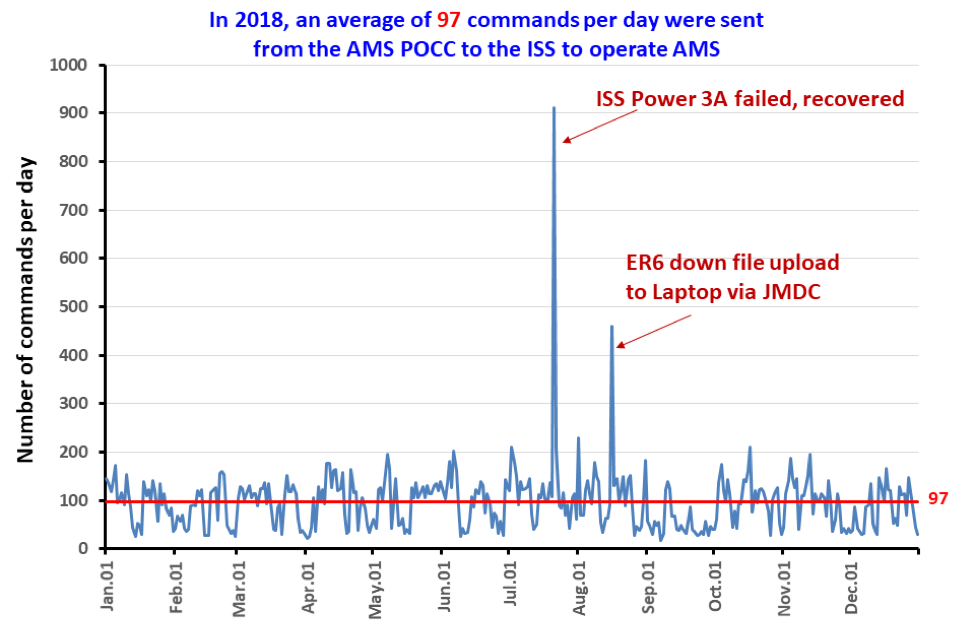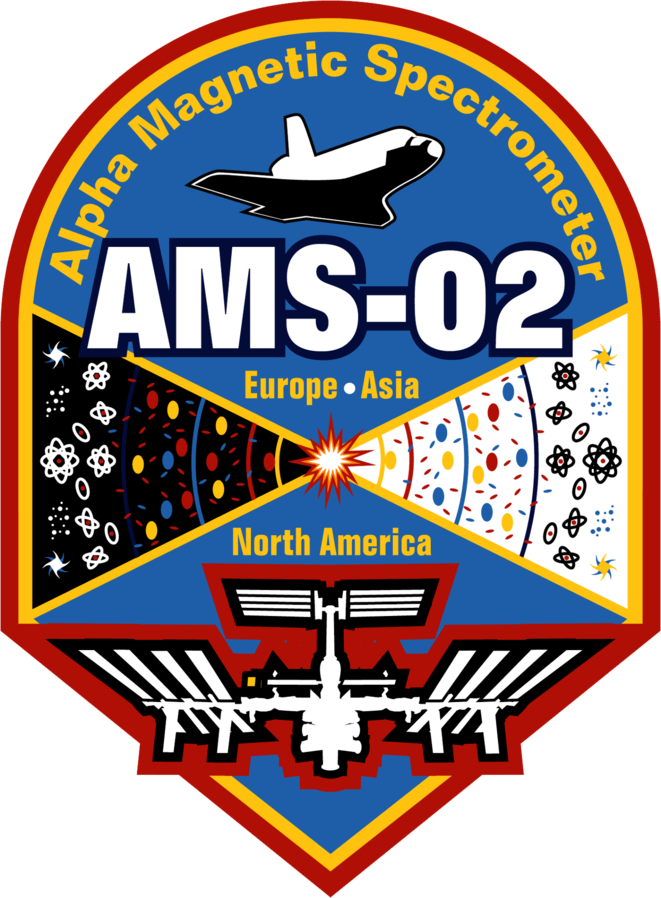AMS Operations
As indicated in Figure 1, AMS operations can be split into flight operations and ground operations. Operations are based around the data flow between the AMS detector and the AMS POCC and the MIT group has written all the software for both flight operations and ground operations. The data transmission paths around the globe are shown in Figure 2 and explained further in the Electronics section.
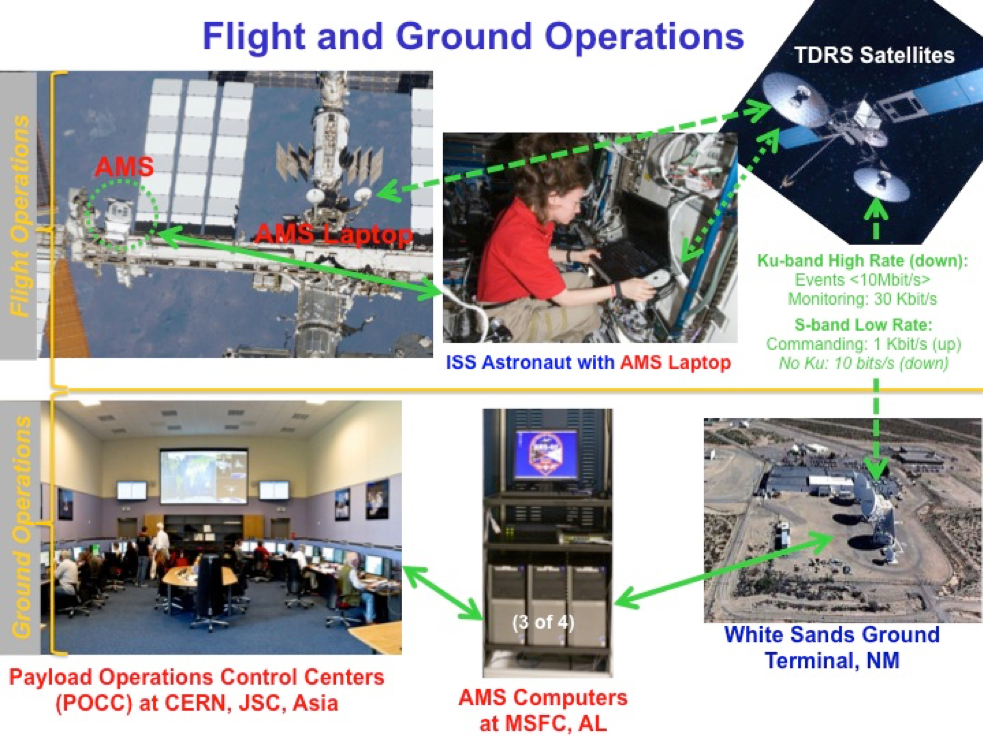
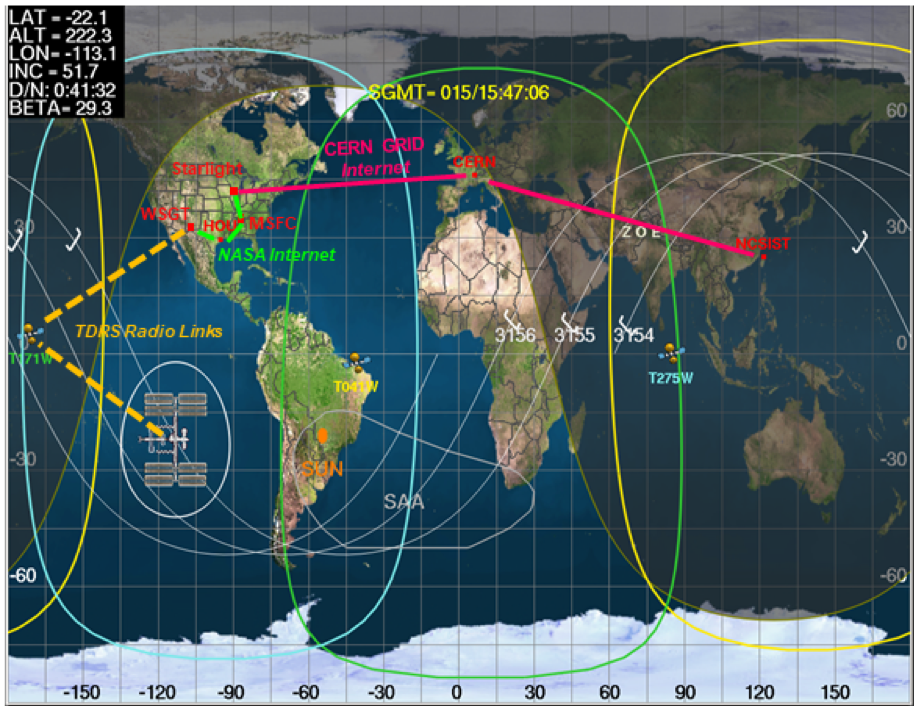
Every day at 5PM (Geneva time), the AMS Collaboration meet in the POCC to review operations over the past 24 hours. These meetings also address concerns brought up by the Research team working on the data analysis. Technical issues are resolved, plans are formulated and major decisions are made at these sessions on a daily basis. The NASA AMS Project Office at JSC regularly joins this meeting remotely. This prompt attention to detail by all groups of the Collaboration is a key to the success of the AMS experiment.
AMS operations on the ISS are continuous; the detector is operated 24 hours per day and 365 days per year. The AMS POCC at CERN is constantly manned to keep the detector within its thermal operational ranges and to facilitate the speedy resolution of any issues in the operation. The AMS flight control team in the POCC is in constant communication with the payload flight control team at the Payload Operations and Integration Center (POIC), located at the Marshall Space Flight Center (MSFC), and the ISS flight control team at the Mission Control Center (MCC), located at the Johnson Space Center (JSC).
Within the POCC, the positions are:
- Management who monitors daily operations and discusses major issues with NASA JSC and Headquarters.
- LEAD who monitors all AMS onboard computers to ensure that the experiment is functioning properly, coordinates all activities between AMS and ISS, and sends commands to AMS. Particular attention is paid to the proper functioning of the Main Data Computer (JMDC), and trigger computer (JLV1). This also includes planning for ISS operations which might affect AMS and AMS operations which might affect ISS.
- DATA who monitors the data flow between the POCC and AMS and manages the AMS Laptop.
- Thermal who monitors the 1118 temperatures sensors, ISS thermal conditions, requests enabling and disabling of 298 heaters by LEAD and movement of ISS radiators and solar panels via NASA.
- Consultant, an expert on ISS software and data systems, who assists DATA and LEAD and upgrades AMS software to match NASA avionics upgrades.
- NASA (staffed by the JSC AMS Project Office) who assists LEAD and Thermal as a liaison to the ISS operational teams.
- TEE who monitors the 5,248 channels of the Transition Radiation Detector and its gas system, the performance of the Anticoincidence (Veto) Counters, and the performance of the 196,608 channels of the silicon tracker, its laser alignment and 2-phase cooling systems.
- PM who monitors the signals from the Time of Flight, the 10,880 channels of the Ring Imaging Cherenkov detector, its calibration and performance and the 2,916 channels of the electromagnetic calorimeter.
- Data Production which monitors the real-time reception and initial processing of the data.
- Infrastructure who is responsible for maintenance and upgrades of the POCC and the Flight Simulator Lab.
Figures 3 and 4 show the facilities at Marshall Space Flight and the ISS Mission Control Johnson Space Center with which the experts are in communication.
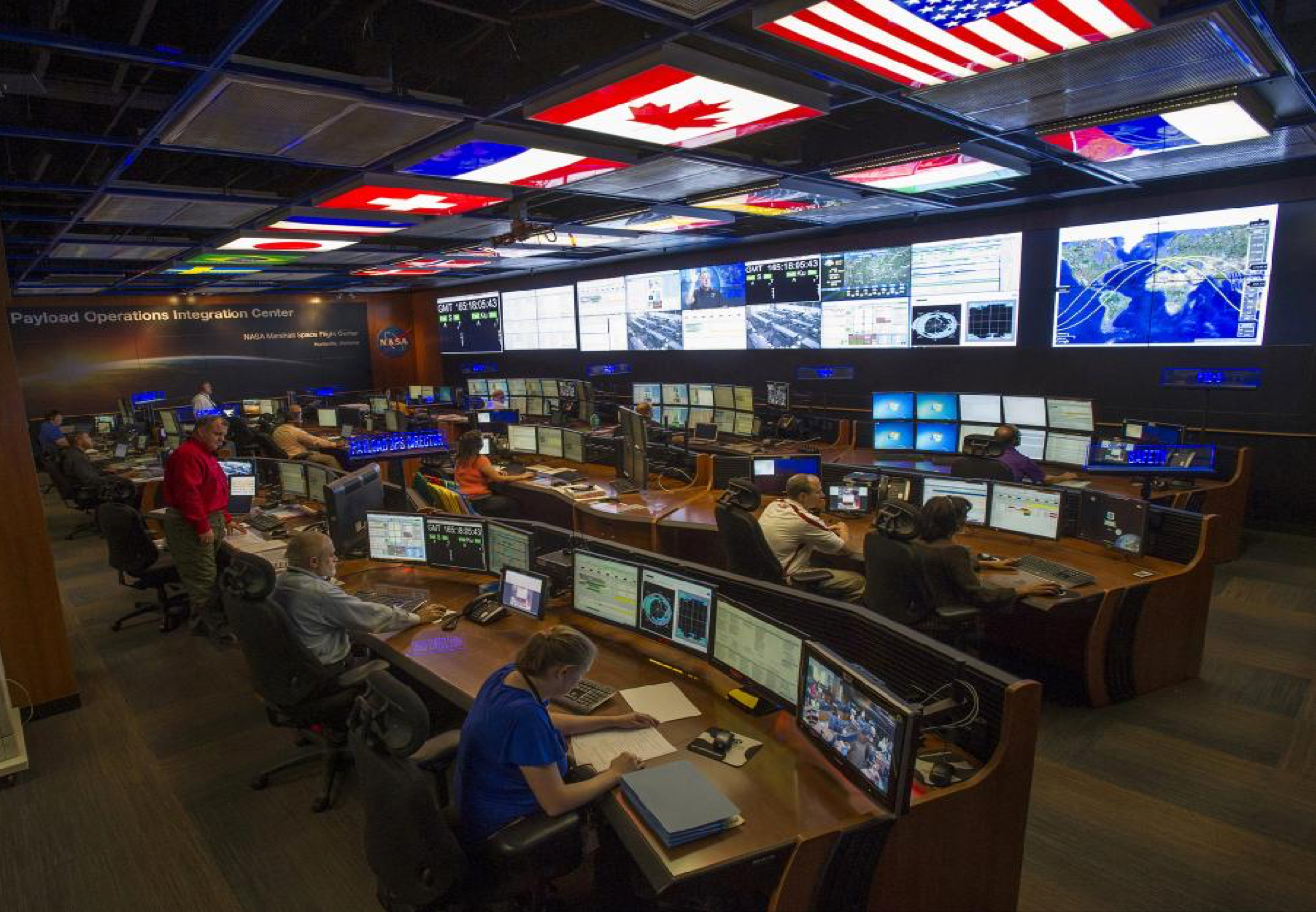
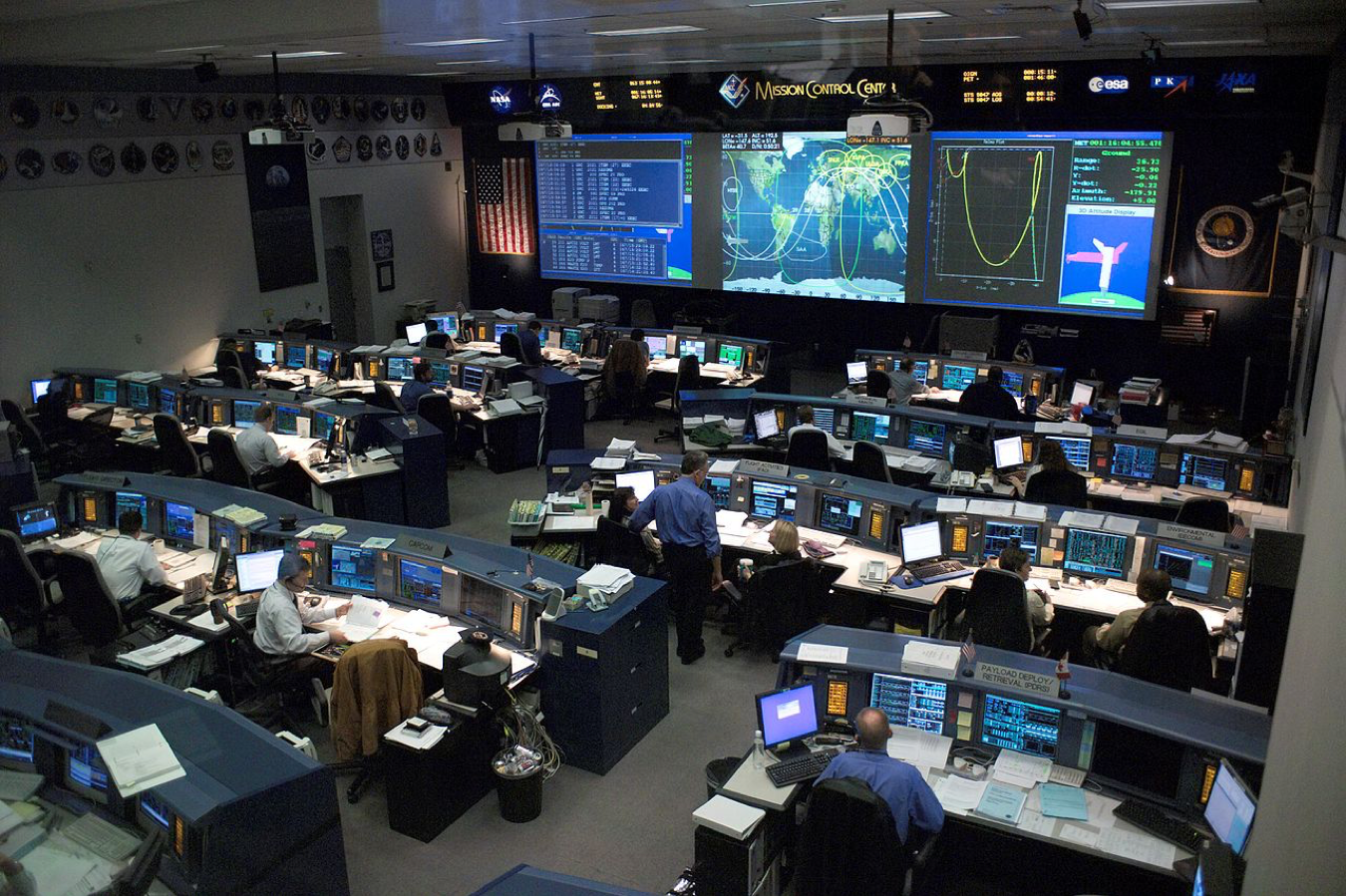
AMS operations on the ISS require continuous communication and coordination between the POCC and multiple ISS teams to optimize both the physics data coming from AMS, the many temperatures within AMS, the power usage of AMS, and the rate at which data can be sent down. Critical services for AMS, some of which must be negotiated every shift, include power, which is shared between two redundant power buses to optimize their performance; command uplink, which must be requested every time it becomes available; and data downlink bandwidth; of which the rate allocated for AMS must be negotiated every orbit.
As shown in Figure 5, electrical power from the station is supplied by the eight large solar arrays and their associated batteries. These feed eight circuits denoted 1A, 1B, …, 4A, 4B. AMS receives power from circuits 3A and 4B. Within AMS, these feed the Power Distribution System (PDS). The PDS efficiently and flexibly converts up to 2,500 W of input power at 124 VDC to 28 VDC and distributes that voltage to the electronics. For maximum efficiency, most heaters run directly on 124 VDC and are enabled by switches within the PDS.
About once a month, the ISS program requests that AMS reconfigure its internal power consumption. Each time during the docking and undocking of visiting vehicles or during extravehicular activities (EVAs), there is a station-wide “power down” when the solar arrays are locked and AMS is requested to minimize power consumption or shift consumption between 3A and 4B. During these power downs, the expert in the POCC makes the necessary reconfiguration within AMS so that it is able to maintain data taking and complete thermal control.

Including power operations, hundreds of commands are sent daily from the POCC to maintain and optimize AMS operations on the ISS. Figures 6 shows the number of commands sent each day in 2018 to AMS and the AMS Laptop. An additional number of commands, about 25% of the numbers shown, were sent to the AMS Laptop or via the AMS Laptop to AMS using the new Ku-Forward uplink service.
